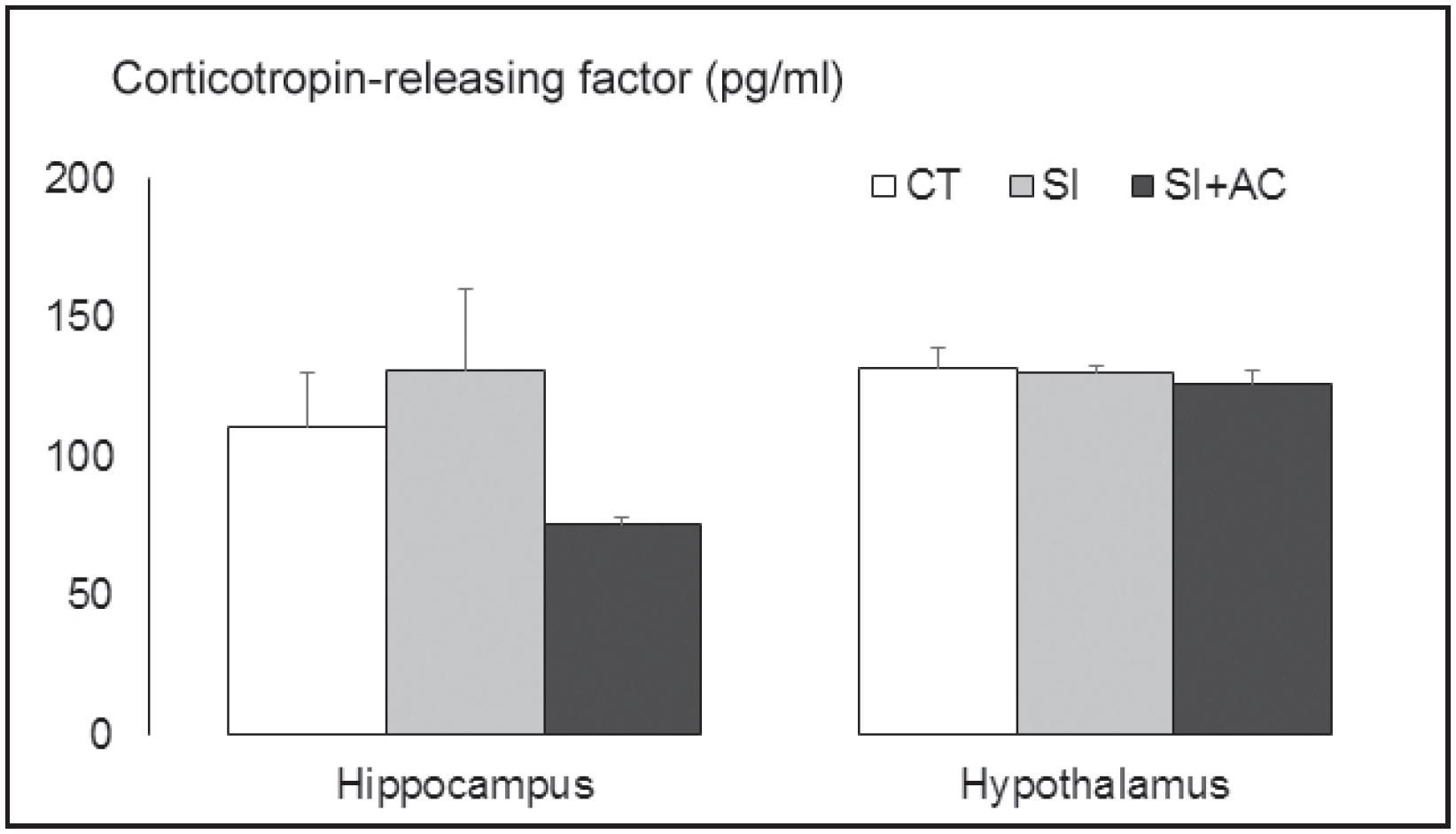Abstract
Introduction:
Agonistic behaviors help to ensure survival, provide advantage in competition, and communicate social status. The resident-intruder paradigm, an animal model based on male intraspecific confrontations, can be an ethologically relevant tool to investigate the neurobiology of aggressive behavior.
Objectives:
To examine behavioral and neurobiological mechanisms of aggressive behavior in male Swiss mice exposed to repeated confrontations in the resident intruder paradigm.
Methods:
Behavioral analysis was performed in association with measurements of plasma corticosterone of mice repeatedly exposed to a potential rival nearby, but inaccessible (social instigation), or to 10 sessions of social instigation followed by direct aggressive encounters. Moreover, corticotropin-releasing factor (CRF) and brain-derived neurotrophic factor (BNDF) were measured in the brain of these animals. Control mice were exposed to neither social instigation nor aggressive confrontations.
Results:
Mice exposed to aggressive confrontations exhibited a similar pattern of species-typical aggressive and non-aggressive behaviors on the first and the last session. Moreover, in contrast to social instigation only, repeated aggressive confrontations promoted an increase in plasma corticosterone. After 10 aggressive confrontation sessions, mice presented a non-significant trend toward reducing hippocampal levels of CRF, which inversely correlated with plasma corticosterone levels. Conversely, repeated sessions of social instigation or aggressive confrontation did not alter BDNF concentrations at the prefrontal cortex and hippocampus.
Conclusion:
Exposure to repeated episodes of aggressive encounters did not promote habituation over time. Additionally, CRF seems to be involved in physiological responses to social stressors.
Keywords:
Aggression; social instigation; corticosterone; CRF; BDNF





